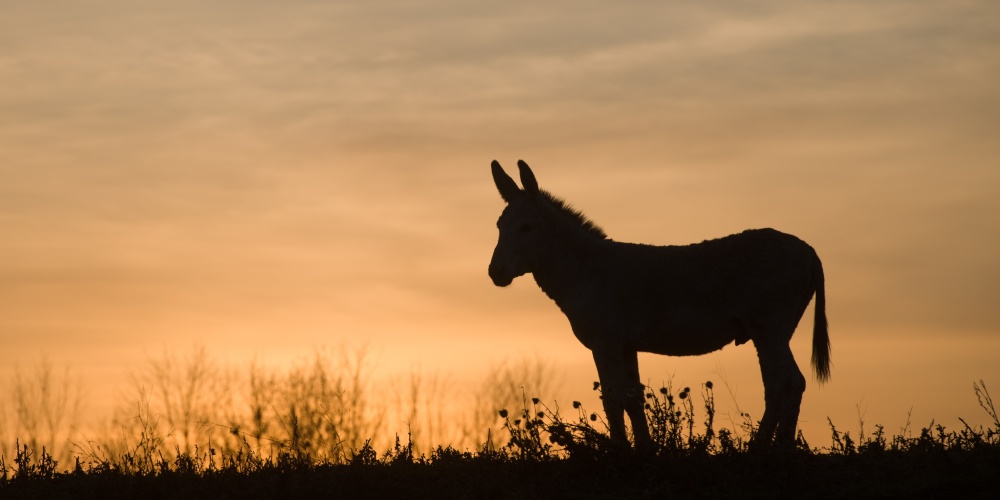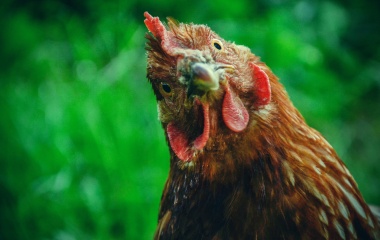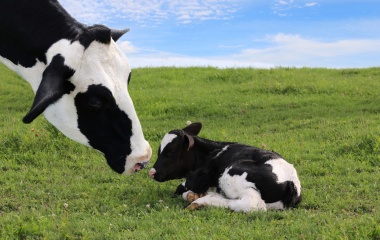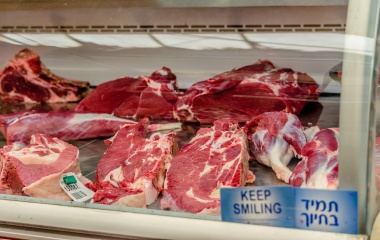
A rabbi, dayan, shochet, doctor, and matir bechorot—these are some of the licensed functionaries needed to fully run a Jewish community. While we all recognize the need for the first four on the list, a matir bechorot is a remnant of a bygone era, when many were farmers and the Temple stood in Jerusalem. With the obligation to offer the bechor as a korban, it was imperative to know what classified as a mum, a defect, which would render the animal not fit for a korban, and allowed for all uses including permission for non-kohanim to eat it.
This determination could have a serious impact, and required great expertise—there were over 90 types of defects that one had to master. Think how long it might take for a doctor to become expert in 90 types of diseases! While many of the defects were simple to detect and declare, many were not. The great Amora Rav, founder of the Yeshiva in Sura—and the one most responsible for transforming Bavel into a centre of Torah—spent 18 months on a farm becoming expert on the laws of the bechor[1] (Sanhedrin 5b and see here for further discussion).
Only upon receiving a ruling that the animal had a defect could one slaughter the animal. Thus, we have a Mishnaic debate (Bechorot 28a) in the case where one slaughters a bechor and only afterwards receives confirmation that the animal did actually have a mum. Rav Yehuda allows the meat to be eaten—after all, it had a mum, which renders it edible for non-kohanim. Rav Meir disagrees, worried that if one allows such, before long people will be slaughtering many a bechor that they incorrectly think has a mum.
As determining the precise definition of a mum was no easy task, mistakes were inevitable, and at times costly. The halacha forgave those mistakes made by a mumcheh, a licensed professional. Thus, if the expert ruled that the animal had a defect and was then found to be mistaken, we lived with the mistake—meaning it is the mizbeach, the altar, and the kohen who lost out. However, if a layman were to issue such a ruling, he would be responsible to pay for the damages caused. Thus, if he mistakenly allowed the slaughter of a bechor, he would have to “pay from his house” for effectively robbing the kohen of this bechor. If the animal had yet to be eaten, it would have to be “buried” as, by right, it should have been offered on the mizbeach and the meat eaten by the kohen. If it had already been eaten, the inadvertent sin was just compounded.
While the application of this law to a bechor is most limited today—as discussed here, the practice is to sell part of the pregnant animal to a non-Jew, exempting the animal from the mitzvah of bechor—it has wide application in other areas.
“[If one] gave a judgment, declaring the innocent liable, the liable innocent; declared unclean a thing which was clean or declared clean a thing which was really unclean, what is done is done and he must pay from his house. If he was licensed by the court, he is exempt” (Bechorot 28b). Jewish law protected the professional from the inevitable mistakes that would be bound to occur on occasion. The halacha did not want a situation where one would be afraid to enter a field due to potential liability. It may be unfortunate for the victim of this mistake, but our Sages felt society as a whole was better served by protecting the licensed professional. The non-professional, on the other hand, is given no such leniency and must pay for their mistakes[2].
This point is illustrated by a fascinating Mishnaic story. The Mishna tells of a cow that had its womb removed. Rabbi Tarfon, thinking this made the animal a treifah, “fed it to the dogs[3]”. However, when the Sages heard about this, they ruled that in fact, the animal remained kosher; i.e., missing a womb is not a fatal illness. This was corroborated by “Todos the doctor”, who reported that “no cow or pig leaves Alexandria of Egypt before its womb is removed, in order that it may not breed”.
Ancient Egypt was famous for much—including its animals. It is for good reason that, in warning against a king having too much power, the Torah rules that, “he may not acquire many horses for himself, so that he will not bring the people back to Egypt” (Devarim 17:16). And at least during the time of the Mishna, it was not only horses, but also cows and pigs that had a special Egyptian breed. Like any economic commodity, the greater the supply, the lower the price. And while the Egyptians were happy to export these special animals, they did not want them bred anywhere else. This enabled them to control the market, limit supply and hence, increase profits—at least, if there were no retaliatory "tariffs".
When Rabbi Tarfon heard this, he exclaimed, “There goes your donkey, Tarfon”. Realizing he had mistakenly and irrevocably declared a kosher animal treif, causing a monetary loss to another, he understood he would have to sell his donkey to compensate for the loss he caused. Rabbi Akiva told him that as an expert in the laws of kashrut, he was exempt from payment.
Of course, exempt does not mean one cannot pay—just that one has no legal obligation to do so. The Talmud is full of examples of Sages who acted lifnim meshurat hadin, beyond their legal obligations.
[1] The Gemara discusses three types of semicha to recognize expertise in various areas of law: in the area of ritual law [Can he rule] Yoreh? [Yes, he can rule] Yoreh!; in monetary law, Yadin? Yadin!, and in the laws of declaring defects in firstborn animals, Yatir bechorot? Yatir! These are just forms of imitation semicha, with the primary semicha—allowing one to be a member of the Sanhedrin—no longer in circulation.
[2] See Shulchan Aruch, Choshen Mishpat #25, for further details and nuance regarding this important and somewhat complex area of Jewish law.
[3] The Torah tells us that an animal that is a treifah, meaning that it is terminally ill, should be “thrown to the dogs”. While this is a warning that we dare not eat it, it also is a reward to dogs, who did not bark when we left Egypt (Rashi, Shemot 22:30).



